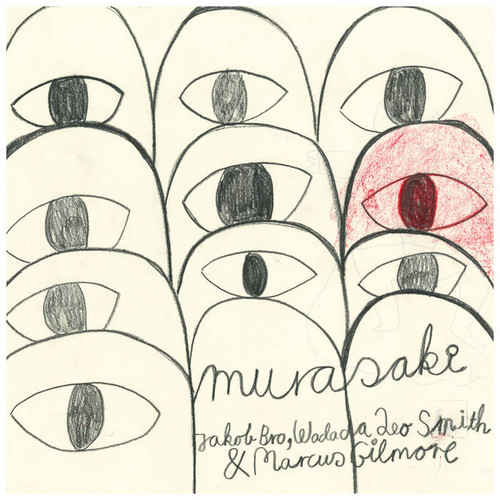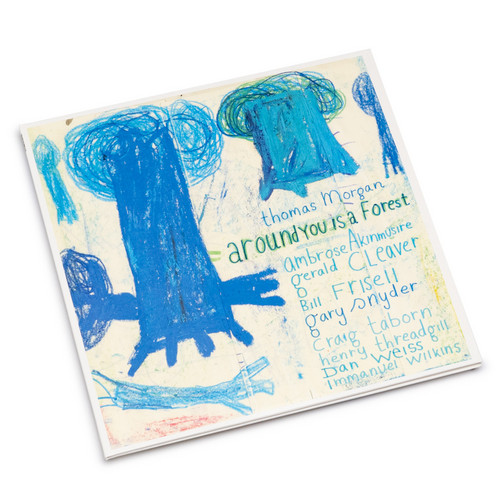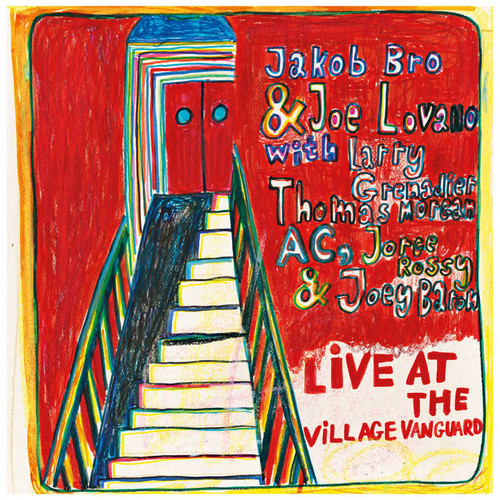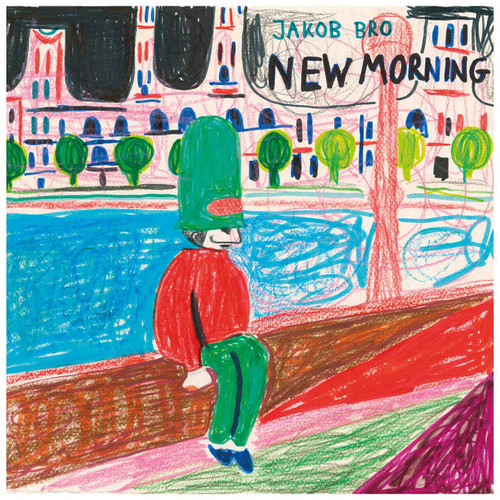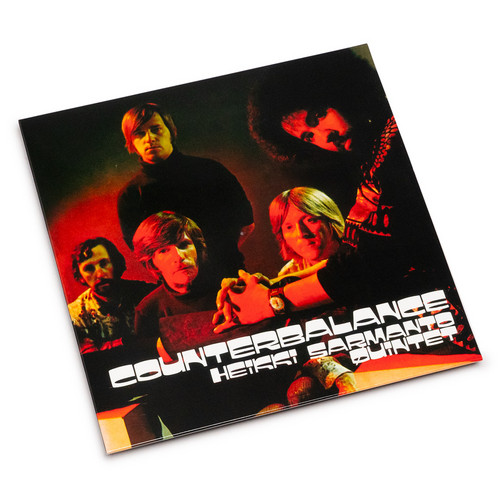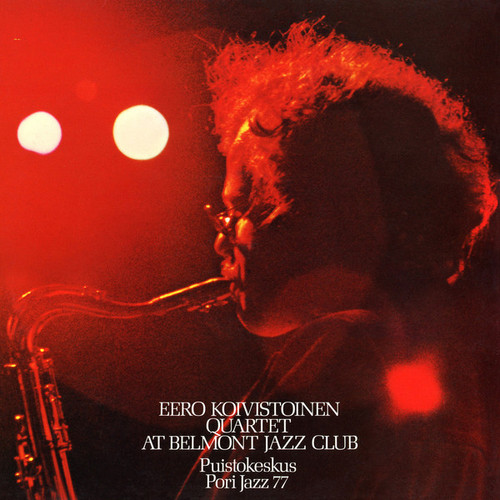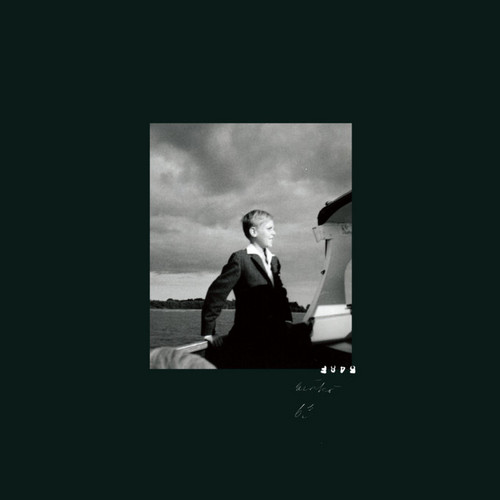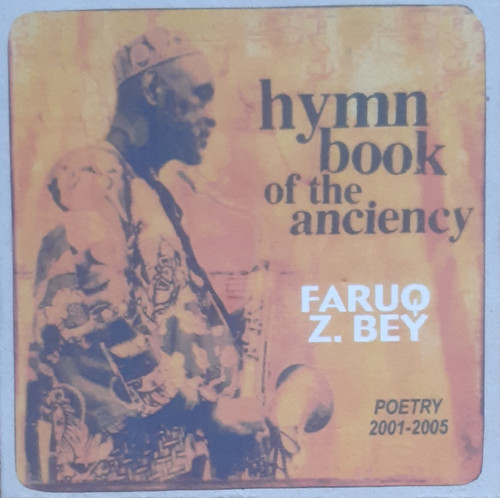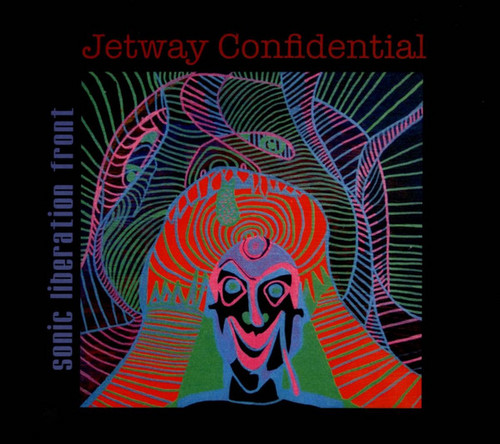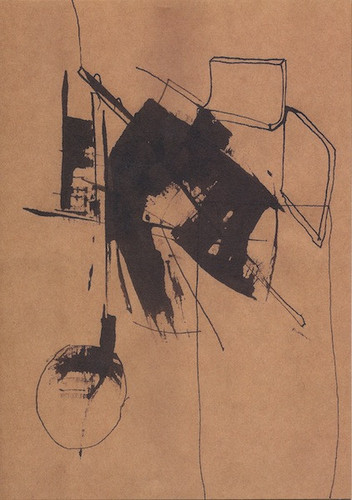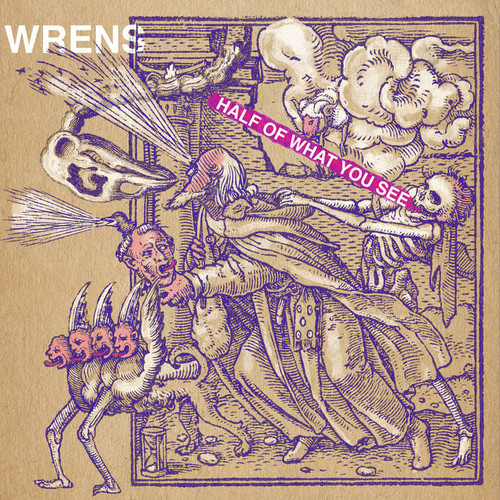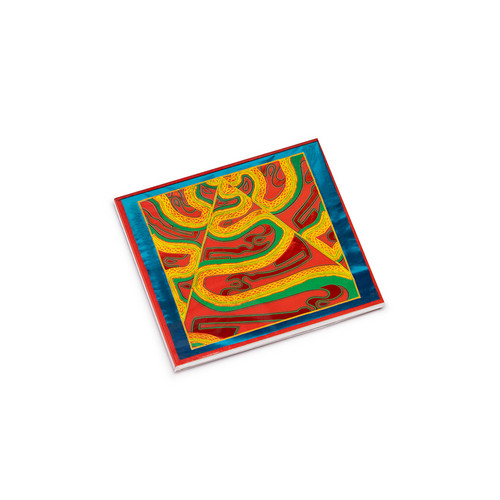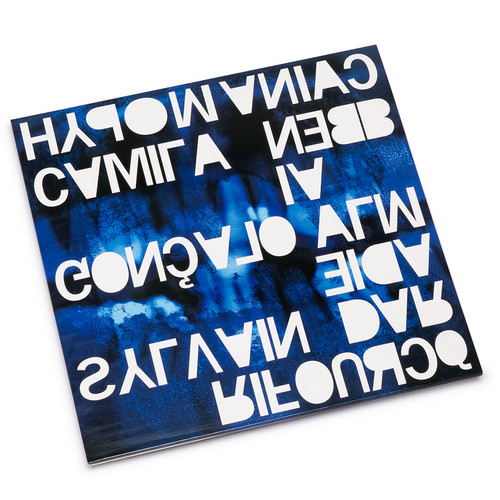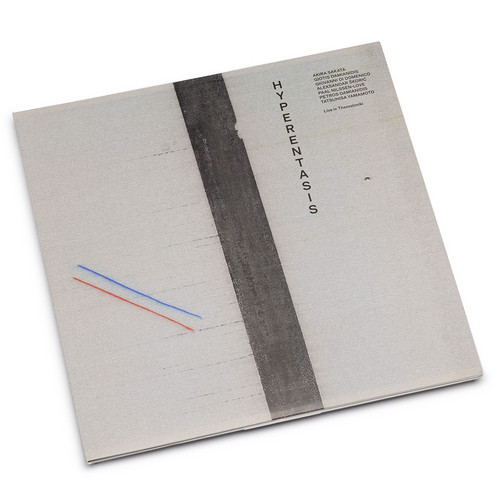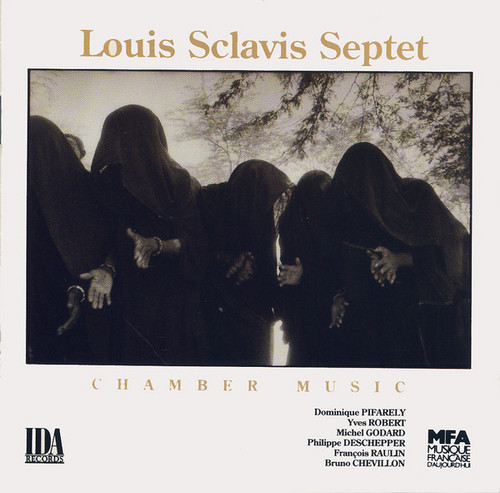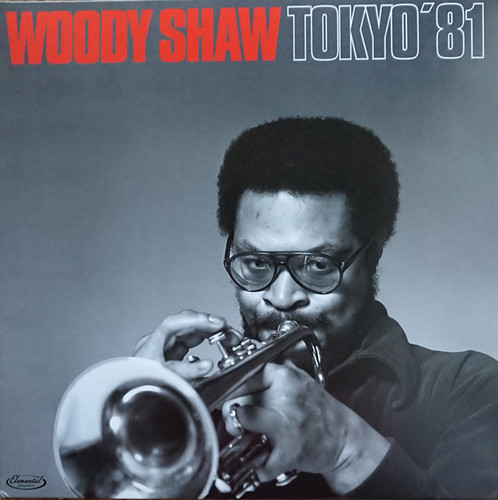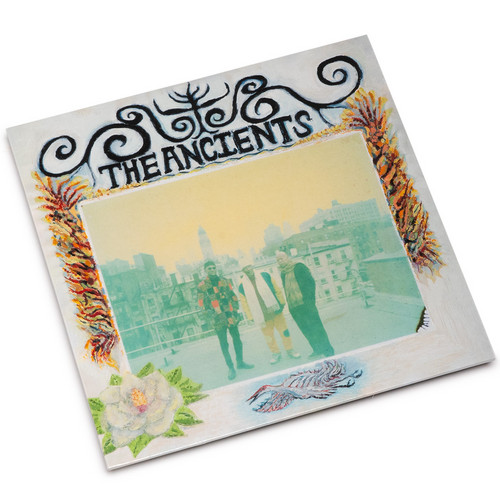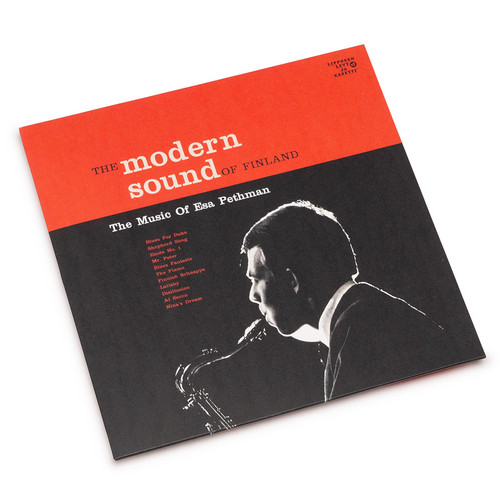Jazz /
Murasaki
A powerful intergenerational trio emerges on Murasaki, featuring Wadada Leo Smith on trumpet, Marcus Gilmore on drums, and Jakob Bro on guitar. Recorded at Power Station (formerly Avatar Studios) in New York, this exploratory session unfolded spontaneously—no retakes, no discussions, just a shared musical language rooted in intuition and trust. “It felt as though this music already existed before we started playing,” Bro reflects. Murasaki captures the creative summit of three visionary artists,…
Around You Is A Forest
The long-awaited debut album from bassist-composer Thomas Morgan is a lush, layered journey through ambient textures and open improvisation. Featuring an all-star cast—Bill Frisell, Craig Taborn, Ambrose Akinmusire, Immanuel Wilkins, Henry Threadgill, Dan Weiss, and Gerald Cleaver—the record is both spacious and intricate, with Morgan’s own virtual instrument woods shaping its organic feel. The inclusion of poet Gary Snyder’s voice adds another dimension to this environmental soundscape. Around …
Live at The Village Vanguard
Loveland Music proudly announces the release of Live at The Village Vanguard, a remarkable new recording that brings together seven of the most distinctive voices in modern jazz. Recorded in the legendary New York room that has defined generations of improvised music, this album captures the raw immediacy and atmospheric depth of a once‑in‑a‑lifetime gathering. Subtle, deeply melodic, and unhurried, Live at The Village Vanguard reveals Bro’s unique gift for creating spacious musical landscapes w…
New Morning
Collective interplay is essentially about listening and giving space. If ever there was a credo for this ensemble recording, this would be it. Sometimes the soloist or a small group steps forward, other times they play as a large unit. This collective of musicians are connected through old and new friendships, a set of relations that has been formed through two decades of co-creation on stage and in the studio, and their new recording is a reaffirmation of that with an A-side of free improvisati…
Counterbalance
Heikki Sarmanto Quintet’s Counterbalance reissued on vinyl for the first time ever! The pioneer of Finnish Modern Jazz, Heikki Sarmanto together with his brother Pekka Sarmanto, Juhani Aaltonen, Lance Gunderson, and Craig Herndon released the album Counterbalance in 1971 under the name Heikki Sarmanto Quintet. Originally released on vinyl and later reissued on CD, Svart Records finally brings Counterbalance back on the market as it was originally intended, on wax.
Heikki Sarmanto studied music a…
At Belmont Jazz Club
Eero Koivistoinen Quartet's rare live album from 1978 reissued for the first time in nearly half a century via Svart Records.
Ensamseglaren
Tip! "I stood on top of the mountain and looked out over the landscape. It was so beautiful that my chest hurt. The light vibrated, time stood still, and the contours dissolved for a moment. Everything had changed; I felt it then. I took their little hands so as not to lose contact with the ground. Then we ran down the mountain, scraping our knees. Still, we didn't make it. You had already put away all the nautical charts, loosened the moorings and steered out among the skerries. Mum stood wavin…
Hymn book of the anciency
2010? release (VERY RARE!) ** Faruq Z. Bey - poetry, voice, alto sax, tenor sax; Mike Carey - reeds; Skeeter Shelton - reeds; Len Bukowski - contra-alto clarinet; Mike Khoury - violin; Mike Gilmore - vibes, percussion; Mike Johnston - bass, gongs, percussion; Nick Ashton - drums, percussion.
What to do with the poetry audio album? There are many of these out there over many decades by poets both famous and not so much. In fact, many of these are recorded by poets onto their laptops and then sold…
Jetway Confidential
2012 release ** Cardboard sleeve. "On Sonic Liberation Liberation Front's fourth album for High Two, Jetway Confidential, the band mightily wields their highly honed brand of Lukumi (Afro-Cuban) meets "post-avant-garde-and-everything-else" mojo. Featuring 23 musicians working under the leadership of drummer/percussionist Kevin Diehl, SLF has expanded its sound and concept even further here. Coming on the heels of 2011's well-received document, Sonic Liberation Front Meets Sunny Murray, this new …
Bestiaries
2011 release ** Oversize folded cardstock sleeve "This disc is the most sublime treatment of minimalist form. Dominique Lash performs brackets of beauty on his wary, droning double bass while Patrick Farmer teases possibility out from hidden silent edges with different percussion styles. Both of these musicians are accomplished in their own right, skilled at their various instruments, well-instructed in the traditional modes of music composition. This feeds and informs the work on Bestiaries. Y…
Half of What You See
Out Of Your Head Records announces the latest chapter in creative music: 'Half of What You See' by Wrens, a bold new contribution to the label’s tradition of boundary-pushing artistry and limited-run releases. Continuing their dedication to inventive sound and visual originality, Out Of Your Head Records—spanning Richmond and Brooklyn—invites listeners into a world where sonic textures and emotional immediacy collide.
'Half of What You See' showcases Wrens at the height of their powers, blending…
Perseverance Flow
CD Edition - Fifteen years in, Joshua Abrams and his Natural Information Society have stopped trying to impress anyone and started building something genuinely necessary. Perseverance Flow strips away the expanded lineups of recent efforts, returning to the core quartet—Lisa Alvarado on harmonium, Mikel Patrick Avery on drums, Jason Stein on bass clarinet, and Abrams on guimbri—for one continuous 37-minute meditation that feels less like composed music than a natural phenomenon you've stumbled u…
Artoxin
2017 release ** "Three top-class international sound adventurers set out the connection of electronics and acoustic sound generators. Experience is the shaping of ephemeral, extreme, genreference and cliché-free sound adventures – a meeting of improvised music. The connection of two identical instruments in the concert frame is rare when you don't want to become a battle, and then with two fancy woodwind instruments is almost exotic. Deep-sounding instruments are mostly and inflexible, but in ma…
Hypomaniac
This is the debut album from that modern free jazz impro trio. Hypomaniac recorded on March 15th 2025 at Thessaloniki-Greece during ''Take 2'' festival organized by defkaz records and Mikri Skini venue. The end result is absolutely fascinating, bringing a fantastic journey that is hypnotic and build up like a sonic storm setting the house on fire. The interplay between the trio sounds organic, flowing and inventive, despite their different approaches. Collective chaos but always grooving very ha…
Giovanni Di Domenico, Akira Sakata, Paal Nilssen-Love, Giotis Damianidis, Aleksandar Skoric, Petros Damianidis, Tatsuhisa Yamamoto
HyperentasisHyperentasis is a double LP celebrating the unique connection between legendary saxophonist Akira Sakata and the city of Thessaloniki. Home to Defkaz Records and the birthplace of the Damianidis brothers, Thessaloniki has welcomed Sakata countless times. This release captures two of his landmark performances as a bandleader in the city. The first LP features the group Entasis with Giovanni Di Domenico (upright piano), Giotis Damianidis (electric guitar), Petros Damianidis (double bass), and Alek…
Tokyo '81
*2025 stock* Elemental Music proudly announces the release of "Woody Shaw – Tokyo '81," a remarkable newly discovered live recording from one of jazz’s most visionary trumpet players. Captured on December 7, 1981, in Tokyo, this previously unreleased performance reveals Shaw at the height of his creative powers, supported by his all-star quintet: Steve Turre (trombone, percussion), Mulgrew Miller (piano), Stafford James (bass), and Tony Reedus (drums).
Boasting Shaw's signature melodic inventive…
The Ancients
Bomb! The debut recording by The Ancients, the intergenerational coalition of Isaiah Collier, William Hooker and William Parker formed by Parker to play concerts in conjunction with the Milford Graves' “A Mind-Body Deal” exhibition at the Institute of Contemporary Art, Los Angeles, and now a working group. Across 2LPs of side-length long-form improvised sets recorded at 2220 Arts & Archives in LA and The Chapel in San Francisco, The Ancients bring the free jazz trio languages first explored by t…
The Garden of Unknowing
*2025 stock* Garden of Unknowing is a work of staggering ingenuity from one of Toronto’s most talented and in demand multi-instrumentalists. Utterly on his own, Colin Fisher masterfully employs guitar, saxophone, synthesizer, drums and bass to create a shifting suite of nocturnal jazz. These are ghosts of song, which, going by the simple clear titles, emphatically question the very nature of existence. Fisher’s breath-taking technical ability to conjure whole sound worlds entirely on his own is …
The Modern Sound Of Finland (The Music Of Esa Pethman)
*2025 stock* A landmark in Scandinavian jazz returns to the spotlight: The Modern Sound of Finland by Esa Pethman, the pioneering Finnish saxophonist and composer, is once again available to audiences seeking a timeless fusion of Nordic sensibility and modern jazz expression.
Originally released in the 1960s, this album represents the breakthrough moment of Finland’s entry into the international jazz scene, capturing the sophistication and creativity of a musician whose work resonated far beyo…
